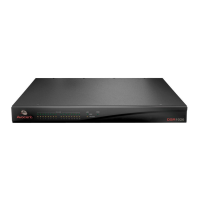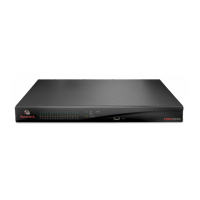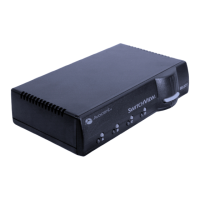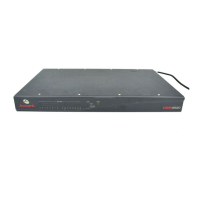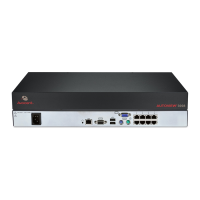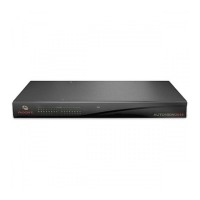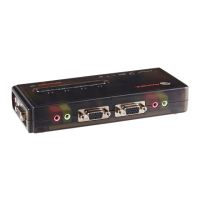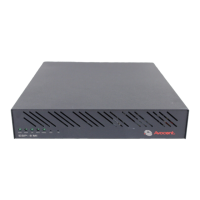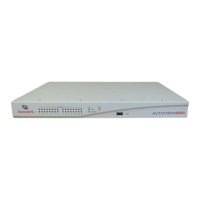
Do you have a question about the Avocent KVM over IP switch and is the answer not in the manual?
Steps to connect the PS/2 IP-KVM switch to the host system.
Details on supported video modes and compatibility for optimal display.
Guides on setting up the device's IP address via DHCP or serial console.
How to control and maintain the remote server when it is operational.
Information on identifying hardware failures and their likely causes.
Overview of the switch's primary features, including connectivity and management.
List of all items included in the PS/2 IP-KVM switch package.
Detailed technical data including ports, resolution, and physical dimensions.
Hardware and software requirements for operating the PS/2 IP-KVM switch.
Visual guides illustrating the correct connections for various cables.
Visual representation and identification of the PS/2 IP-KVM switch units.
Diagram and explanation of the PS/2 IP-KVM switch usage scenario.
Step-by-step instructions for physically connecting the PS/2 IP-KVM switch to host computers.
Instructions for connecting external reset or power control devices to the serial interface.
Default network settings and procedures for first-time IP configuration.
Setting up the device's IP address using a DHCP server.
Configuring the device's IP address via a direct serial connection.
Adjusting settings for optimal keyboard, mouse, and video performance.
How to manage user accounts and change passwords for device access.
Configuring keyboard settings for proper remote keyboard functionality.
Adjusting mouse modes and synchronization for smooth remote cursor control.
Understanding automatic speed detection and synchronization methods for the mouse.
Considerations for host operating system mouse driver settings.
Using Single Mouse Mode for direct control and Double Mouse Mode for synchronization.
Guidance on optimal mouse settings for various operating systems.
List of supported video modes and recommendations for compatibility.
Understanding the interfaces and requirements for operating the PS/2 IP-KVM switch.
How to use the device as a standard KVM switch, including power-on states and buttons.
Using the front panel buttons to select PC ports and navigate the interface.
Understanding the meaning of Power and Link LEDs for each PC port.
Using the bank LED for navigation and the reset button for system reinitialization.
Utilizing keyboard shortcuts for convenient port switching and system control.
Connecting multiple KVM switches in a daisy chain for expanded port access.
Adding or removing PCs without powering down the system.
Navigating and using the On-Screen Display menu for system management.
Accessing the device via web browser using default or configured credentials.
Procedure for logging out the current user session.
Understanding the function of the Remote Console for accessing remote systems.
Overview of the main interface and navigation elements for managing the device.
Using the control bar for actions like Ctrl+Alt+Delete, Auto Adjust, and Sync Mouse.
Managing mouse cursor synchronization and switching between Single/Double mouse modes.
Accessing advanced settings like Monitor Only, Exclusive Access, Scaling, etc.
Changing the appearance of the local mouse pointer within the Remote Console.
Fine-tuning video display parameters for optimal picture quality.
Adjusting display scaling and choosing mouse synchronization methods (Fast/Intelligent Sync).
Using the on-screen soft keyboard for different language and country mappings.
Setting local keyboard mapping and defining hotkey commands for system control.
Interpreting the status line for connection state, desktop size, and network traffic.
Opening and refreshing the KVM console for remote system access.
Connecting to the device via Telnet for text-based command-line management.
Procedure for modifying the passwords for user accounts.
Creating, modifying, and deleting user accounts and their permissions.
Customizing console settings for individual users, including transmission encoding.
Configuring the Remote Console type, exclusive access, and button key mappings.
Selecting host interface, keyboard models, and mouse types for proper operation.
Adjusting video settings like noise filter and composite sync for optimal display.
Configuring IP address, subnet mask, gateway, and ports for network connectivity.
Configuring Dynamic DNS for remote access with changing IP addresses.
Enforcing HTTPS for web access and configuring KVM encryption.
Generating and installing SSL certificates for secure HTTPS connections.
Configuring the serial port for initial setup or modem connections.
Setting the device's internal clock manually or via NTP server.
Setting up internal, NFS, SMTP, or SNMP logging for events.
Accessing product name, serial number, firmware version, and MAC address.
Displaying currently connected users, their IP addresses, and activity status.
Viewing system events, authentication logs, and board messages.
Steps for uploading and installing new firmware to update device functionality.
Resetting keyboard, mouse, video engine, or the entire IP-KVM switch.
Details on FCC rules and conditions for device operation.
Information regarding CE compliance with EN 55 022 standards.
Detailed pin assignment for the VGA HD-15 connector.
Pin assignment details for the RJ-45 Ethernet connector.
Pin assignment details for the RJ-45 ISDN connector.
Pin assignment details for the Serial SUB-D 9 connector.
Pin assignment details for the KVM 15-pin connector.
Mapping of standard US keyboard keys to their corresponding key codes for hotkey functions.

